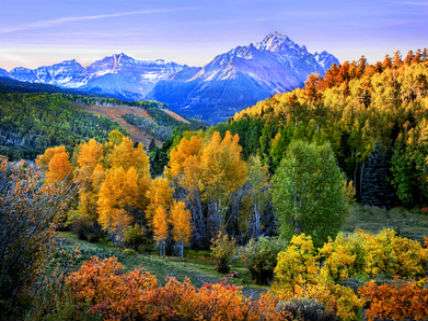Predictions of the Death of Wilderness May Be a Bit Premature
Most people are moving to cities and peak farmland is in the offing

"Catastrophic Declines in Wilderness Areas Undermine Global Environmental Targets" was the restrained title of an article just published in the journal Current Biology. The researchers reported that by comparing relevant maps that they found that 10 percent of the world's remaining wildernesses have disappeared since the 1990s. Specifically, they claim:
We demonstrate alarming losses comprising one-tenth (3.3 million km2) of global wilderness areas over the last two decades, particularly in the Amazon (30%) and central Africa (14%). We assess increases in the protection of wilderness over the same time frame and show that these efforts are failing to keep pace with the rate ofwilderness loss, which is nearly double the rate of protection. Our findings underscore an immediate need for international policies to recognize the vital values of wilderness and the unprecedented threats they face and to underscore urgent large-scale, multifaceted actions needed to maintain them.
Since the researchers basically comparing changes in images and maps, they don't go into great detail about why wilderness areas are shrinking. However they do know what they want done:
There is a clear need to focus on halting current threatening activities that have been leading to the recent erosion of wilderness areas, including limiting road expansion; preventing industrial mining, forestry, and other large-scale agricultural operations; and enforcing existing legal frameworks considering that half of all tropical forest clearing between 2000 and 2012 was illegal.
And, of course, recognizing and enforcing the property rights of local people who live on the land. Nah, just kidding: Instead they want lots more government money.
It turns out that the researchers can take heart from several trends that strongly suggest a resurgence of wild nature as this century proceeds. I discuss those trends in my book The End of Doom. First, most people are moving to cities:
By 2010, the majority of people lived in cities for the first time in history. Demographers expect that 80 percent of people will live in urban areas by 2050 or so. Setting aside the demographic fact that people who live in cities have fewer children, what this trend means is that a lot fewer people will be living on the landscape in the future. Today, about half of the world's population of 7.2 billion people lives in rural areas. Assuming that world population grows to 9 billion by 2050 and that 80 percent do live in cities, that would mean that only 1.8 billion would be on the landscape, as compared to 3.6 billion today. If world population tops out at 8 billion, then only 1.6 billion people would live in the countryside—2 billion fewer people than live there now.
In addition, humanity is close to or has already achieved peak farmland:
Considering that agriculture is the most expansive and intensive way in which people transform natural landscapes, the really good news is that the amount of land globally devoted to food production may be falling as population growth slows and agricultural productivity increases. "We believe that projecting conservative values for population, affluence, consumers, and technology shows humanity peaking in the use of farmland," conclude Jesse Ausubel, the director of the Program for the Human Environment at Rockefeller University, and his colleagues in their 2013 article "Peak Farmland and the Prospect for Land Sparing." They add, "Global arable land and permanent crops spanned 1,371 million hectares in 1961 and 1,533 million hectares in 2009, and we project a return to 1,385 million hectares in 2060." As a result of these trends, humanity will likely restore at least 146 million hectares, an area two and a half times that of France or the size of ten Iowas, and possibly much more land. "Another 50 years from now, the Green Revolution may be recalled not only for the global diffusion of high-yield cultivation practices for many crops, but as the herald of peak farmland and the restoration of vast acreages of Nature," write the researchers. "Now we are confident that we stand on the peak of crop- land use, gazing at a wide expanse of land that will be spared for Nature."
Fewer people and increasing agricultural productivity means more land reverting to nature. Catastrophe likely averted.

Show Comments (31)